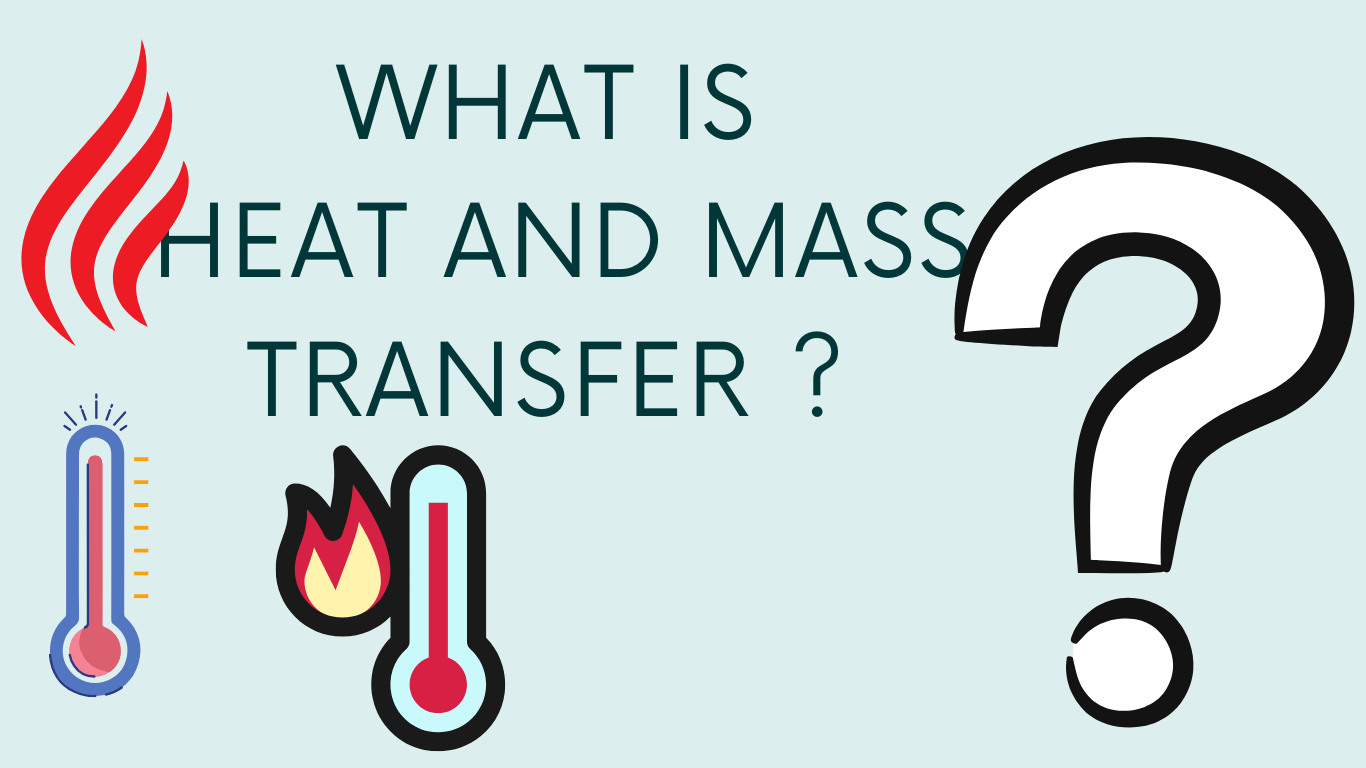Introduction
Heat and mass transfer is a fundamental subject in engineering and physics, focusing on the movement of thermal energy and material substances within and between different systems. It plays a crucial role in various industrial applications such as energy generation, manufacturing, HVAC systems, and biomedical engineering. This document explores the theory of heat and mass transfer, covering fundamental principles, governing equations, modes of transfer, and practical applications.
Section 1: Heat Transfer
Heat transfer is the process by which thermal energy is exchanged between different physical systems due to temperature differences. It occurs in three primary modes: conduction, convection, and radiation.
1.1 Conduction
Conduction is the transfer of heat through a solid or stationary fluid due to molecular vibrations and electron movement.
- Fourier’s Law of Heat Conduction: where:
- = heat flux (W/m²)
- = thermal conductivity (W/m·K)
- = temperature gradient
- Thermal Conductivity: A property that measures a material’s ability to conduct heat.
- Steady-State vs. Transient Conduction: Steady-state conduction occurs when temperature does not change with time, while transient conduction involves time-dependent temperature changes.
1.2 Convection
Convection is the transfer of heat between a solid surface and a moving fluid.
- Newton’s Law of Cooling: where:
- = convective heat transfer coefficient (W/m²K)
- = surface area (m²)
- = surface temperature (°C or K)
- = fluid temperature (°C or K)
- Types of Convection:
- Natural (Free) Convection: Occurs due to density differences in the fluid.
- Forced Convection: Involves external means such as fans or pumps.
- Laminar vs. Turbulent Convection: Determined by the Reynolds number (Re), which dictates flow behavior.
1.3 Radiation
Radiation is the transfer of heat through electromagnetic waves.
- Stefan-Boltzmann Law: where:
- = Stefan-Boltzmann constant (5.67 × 10⁻⁸ W/m²K⁴)
- = emissivity (material property, 0 ≤ ≤ 1)
- = surface area (m²)
- = absolute temperature (K)
- Kirchhoff’s Law: States that emissivity and absorptivity are equal for a surface in thermal equilibrium.
Section 2: Mass Transfer
Mass transfer refers to the movement of mass from one location to another due to concentration gradients, phase changes, or diffusion mechanisms.
2.1 Diffusion
Diffusion is the process where molecules move from a region of high concentration to low concentration.
- Fick’s First Law of Diffusion: where:
- = diffusion flux (kg/m²s)
- = diffusion coefficient (m²/s)
- = concentration gradient
- Fick’s Second Law: Accounts for time-dependent diffusion processes.
2.2 Convective Mass Transfer
Convective mass transfer occurs when mass is transported by a moving fluid.
- Mass Transfer Coefficient: where:
- = mass flux (kg/m²s)
- = mass transfer coefficient (m/s)
- , = surface and bulk concentrations
2.3 Phase Change Mass Transfer
- Evaporation: Liquid-to-gas transition.
- Condensation: Gas-to-liquid transition.
- Boiling and Sublimation: Direct solid-to-gas or vice versa without passing through the liquid phase.
Section 3: Combined Heat and Mass Transfer Applications
The principles of heat and mass transfer are often applied together in engineering applications.
3.1 Heat Exchangers
- Shell and Tube Heat Exchanger: Used in power plants and chemical industries.
- Plate Heat Exchanger: Provides high efficiency and compact design.
- Effectiveness-NTU Method: Evaluates heat exchanger performance.
3.2 Industrial Applications
- HVAC Systems: Used in climate control applications.
- Refrigeration and Cooling Systems: Operate based on heat and mass transfer principles.
- Chemical Reactors: Require precise temperature and mass transfer control.
- Drying Processes: Used in food and pharmaceutical industries.
3.3 Biomedical Applications
- Human Body Heat Transfer: Regulates body temperature via conduction, convection, and radiation.
- Artificial Organs: Utilize heat and mass transfer principles.
- Cryogenics: Preservation of biological materials at low temperatures.
Section 4: Governing Equations and Dimensionless Numbers
Heat and mass transfer phenomena are analyzed using various dimensionless numbers:
- Reynolds Number (Re): Determines flow type.
- Nusselt Number (Nu): Indicates convective heat transfer efficiency.
- Prandtl Number (Pr): Relates momentum and thermal diffusivity.
- Schmidt Number (Sc): Compares mass diffusivity to momentum diffusivity.
- Lewis Number (Le): Ratio of thermal to mass diffusivity



